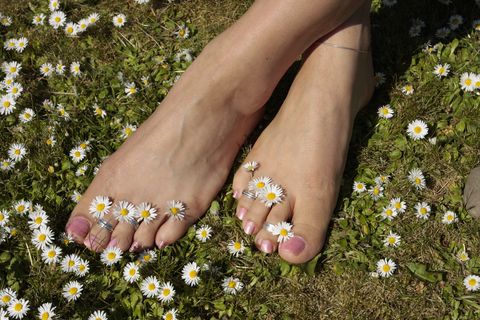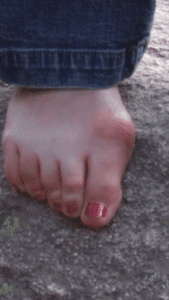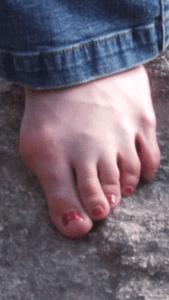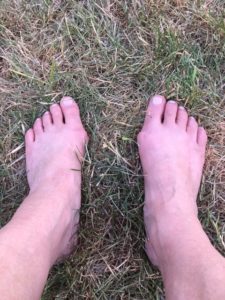My Fixation With Feet

My fixation and fascination with feet started with several years ago when I began studying ballet from an incredible woman, Jayne Persch. She is a teacher with an impressive background and a passion for life-long learning. However, I didn’t get her fixation with feet. And toes.
At the beginning of every class, not only did she have us exercise our toes, she had us play with them! Ewe! I didn’t want to touch my feet, or my toes. What did that have to do with ballet class?
Pretty much everything, as well as general health and well-being. When your feet hurt, everything hurts. But not only that, it interferes with your ability to feel the floor, stand your ground (so to speak),and messes with your balance, posture, and overall health as well.
Here are a few fun facts about feet.
1). Nearly a quarter of all the bones in our body are in our feet, which allows for the remarkable range of movement and flexibility of our feet. (Then why do they sometimes feel like blocks of wood?)
2). Feet function best when the heel and the front of the foot are at the same level. The toes have to be able to freely flex, extend, and spread. I guess that explains the following fun fact. Which is…
3). Women are 4 times more likely than men to experience foot problems in their lifetime. High heels, anyone?
4). There are a myriad of foot deformities and conditions that can cause pain, dysfunction, and make you miserable. Often times, painful injections or surgery are the only options offered. But it doesn’t have to be that way, and I have proof.
Because after my initial resistance, working my feet began to make sense. I did the exercises. I massaged my feet. I even (ack!) massaged my toes and between my toes. I used tea tree oil to help break up the calcium deposits that were interfering with my circulation.
My feet became softer, more supple, and more flexible. They contacted the ground more like cat paws rather than blocks of wood. My bunions got smaller, my toes re-aligned, my crossover toe magically self-corrected, my Morton’s neuroma disappeared. All without surgery.
Although it creeps me out a little to post my feet for all the world to see, here are the results. It took time and dedication, but it was well worth it.



I know everyone doesn’t have access to someone as brilliant as my teacher, so I would like to share some resources that I have found to help you change your feet and rock your world if you choose to do so.
The first is a book titled “Whole Body Barefoot” by Katy Bowman. She describes the biomechanics of the feet, toes, ankles and lower legs in a very clear way that’s easy to understand. And she’s funny. Who knew feet could be funny? She also includes techniques for stretching, exercising, and massaging your feet.
Here’s a great article I found that has video to support the information. Click here.
However, the model demonstrates the exercises too fast. They need to be done slowly, meticulously, and with thoughtful awareness to allow for the changes to occur. In the second video, she rolls to the outside surface of her feet as she splays her toes. That actually weakens the ankle joint as well as the inner thigh muscles which are crucial to stabilizing your knee, hip, and pelvic floor muscles.
If you have any questions, feel free to contact me. Yes, it’s that important. Everybody deserves (and can have) healthy, flexible feet. Here’s to your health!
ankles, ballet, dancer's feet, feet, foot deformities, foot exercises, foot health, foot massage, foot stretches, health, lower legs, Morton's neuroma, no more foot pain, toes, wellness




